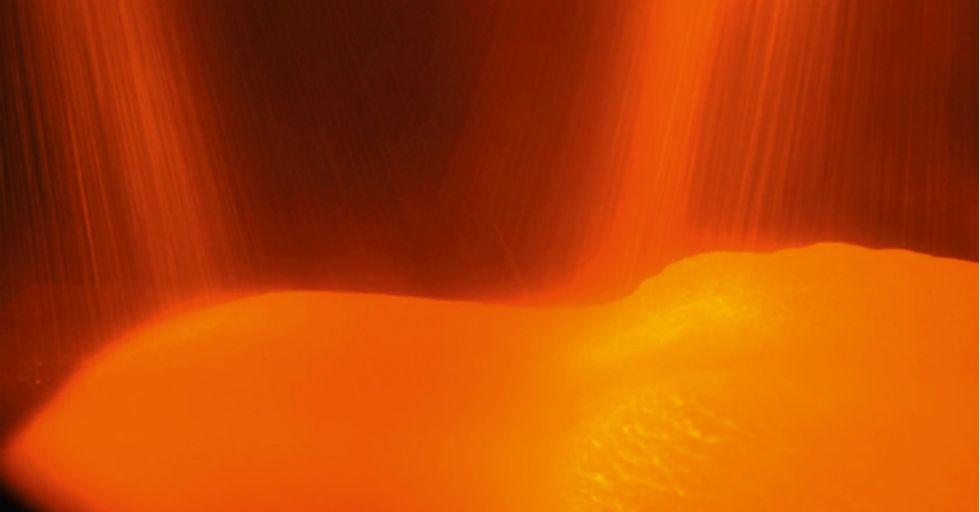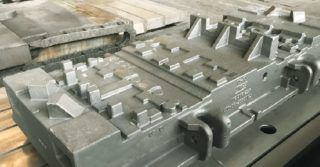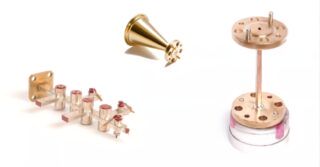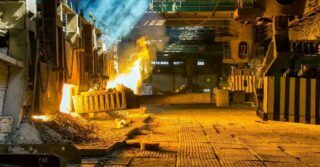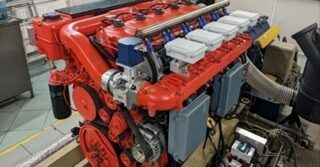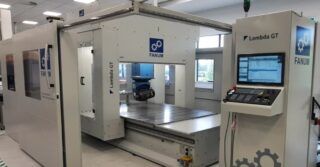One of the production technologies that will certainly develop in the coming years is spray forming. Thanks to various types of research and development, you can see more and more clearly the benefits that it can bring in industrial applications. The more that spray forming is more and more often used in industries such as the aviation industry, among others for joining various types of innovative metal alloys.
Direction: atomization
The basis of the technology is that new materials are deposited on metal elements characterized by a homogeneous cell structure by spraying them in the form of droplets on the thus shaped substrate. This is because in the technological process, the material is first melted (most often in an induction furnace), and then – in the form of a stream that can be transformed into drops – through a chamber of accelerating gas, it is sprayed on a given surface. In this way, the material, having a semi-solid structure at this stage of the process, is able to adhere to the surface to which it is applied. The application of a new material on a new surface can be carried out gradually, until the overall structure is formed in the place where the spray forming was applied.
How this method is characterized by Łukasz Zych, Michał Kisilewicz and Ludosław Stobierski from the AGH University of Science and Technology, Faculty of Materials Science and Ceramics, in the article “Forming products from aqueous silicon carbide suspensions using the spray method”: “Spray forming is carried out at room temperature and consists of spraying suspension in a stream of gas (air) that transports its droplets towards the sprayed surface. The formed fittings are subjected to drying processes and then sintering. Spray molding enables thin-walled products to be shaped. It gives the possibility of forming both flat products and cylindrical products, it enables the control of the thickness and composition of the layer. ”
What is particularly important for the development opportunities of technologies related to spray forming are the constantly increasing possibilities of subjecting metals and their alloys to atomization processes, thanks to which they can be formed, among others. into semi-liquid structures. Therefore, the development of such fields of science as nanotechnology is of fundamental importance in this context.
There is no need to convince anyone about the benefits it can bring in such applications, such as anti-corrosion coatings. At the same time, the research conducted in this area may also influence the development of new models of production and joining together various types of newly formed chemical structures. One of them is certainly spray forming.
How to use new alloys?
Historically, the beginning of spray molding dates back to the 1970s, when the Welsh Swansea University conducted research for the first time, which resulted in the possibility of influencing (through the high pressure of the gas stream) into a stable structure of the alloy, causing it to atomize. In this way, the obtained liquefaction of the alloy allowed for directing it to a specific surface and creating a new, better-quality chemical structure. In the following years, three university employees refined these methods at Osprey Metals, which from 1984 became part of the Sandvik group. Today, Sandvik-Osprey has a number of applicants related to spray forming. At the same time, the new technology has been used by the company in many industries.
This is because one of the activities of the Welsh company has become the creation of a wide range of various special alloys that can be implemented in many industries. Currently, spray forming is a constantly improved method, which is used, among others. in the space and aviation industry, in the production of engines. Its use is related to stainless steel coverings in various types of aluminum alloys, including with titanium, neodymium and silver.
The application of this method of joining metals with each other – in the context of aluminum compounds – informs the Total Materia portal in the article “Spray Forming of Aluminum-Alloy Products: Part One”: “As well as potential near-net-shape benefits, the primary advantage of the spray forming process is the ability to manufacture alloy compositions that are problematical in conventional processes such as ingot casting, direct chill casting, and powder metallurgy. Commercial examples of alloys manufactured by spray forming include AI-Si based alloys for cylinder liners, high speed and specialty steel billets and Si-Al alloys for thermal management applications. The disadvantages of spray forming include as-sprayed porosity that requires closing by hot isostatic pressing or other downstream processes, and losses because not all droplets created by atomization end up in the spray- formed billet. ”
Despite the fact that the article also indicates disadvantages related to the use of spray forming, the development of this method has a place in expanding the possibilities of the industry in the coming years. Not only because the optimal methods of joining various types of metal alloys are constantly being searched for, enabling the creation of more and more durable and effective elements. In this context, the possibility of using it in the rapidly entering the market of 3D printing technology may be of great importance.
Industry is looking for solutions
– Additive manufacturing has resulted in the production of a new type of material – I mean titanium and stainless steel – these are special powders that are later laser sintered. At the same time, the production of plastic parts has developed significantly and they are now widely available – said Dr. hab. Eng. Włodzimierz Adamski, President of the Board of the ProCAx Association.
The conversation focused on the continued growth in the importance of additive manufacturing (commonly known as 3D printing) in the aviation industry. In this context, Włodzimierz Adamski emphasized that the later the plane is produced, the more elements are produced in this way. At the same time, the scientific and research process is underway, which is to enable the increasing use of additive technology not only in the production of aircraft, but also in many other industries.
This is important because projects are constantly being implemented to find optimal solutions for creating new materials and combining them into more durable and effective units. All the more so because scientists are still creating alloys that push the boundaries of possibilities. Therefore, methods such as spray forming will also be more and more widely used in industry.
As stated by Dr. Łukasz Rogal from the Institute of Metallurgy and Materials Science of the Polish Academy of Sciences in the article “Thixotropic casting – a modern technology for the production of advanced construction materials”: “Thixotropic or re-forming technologies of metal alloys are an alternative to plastic working and casting. It is used in industry for light metals such as aluminum and magnesium alloys. In the case of iron alloys, there are many limitations mainly due to the high process temperatures. As part of the research conducted in the country with the funds from the National Center for Research and Development, intensive work is underway on the implementation of the technology into the industry. “


